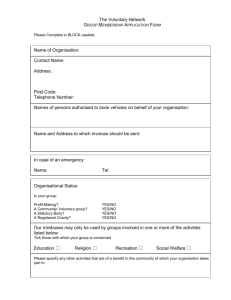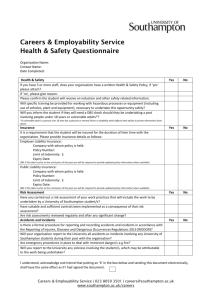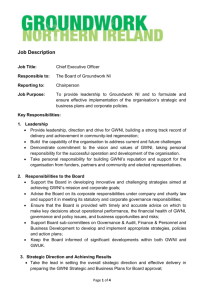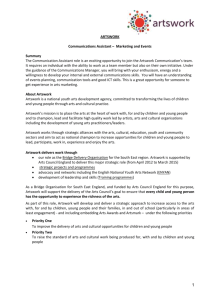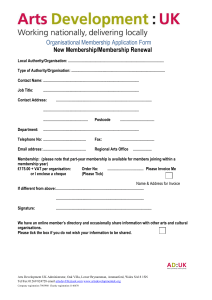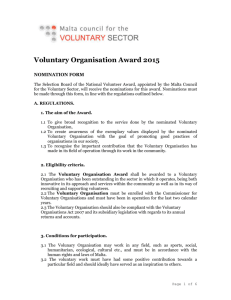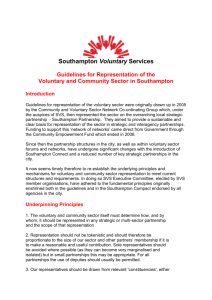Writing a Press Release - Southampton Voluntary Services
advertisement
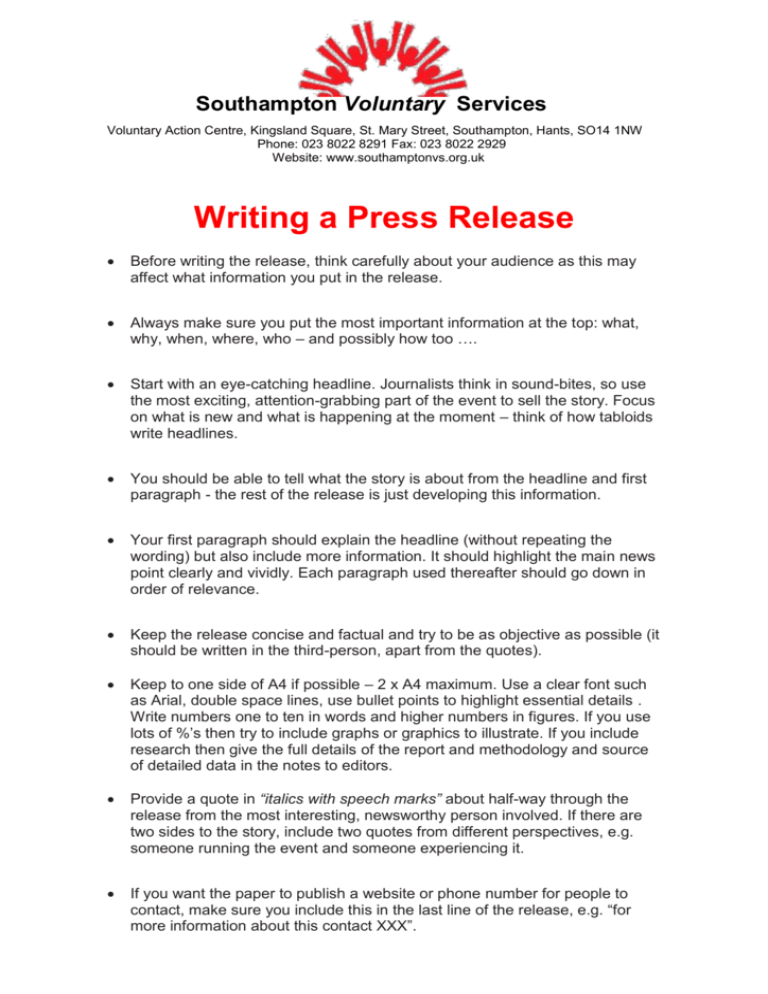
Southampton Voluntary Services Voluntary Action Centre, Kingsland Square, St. Mary Street, Southampton, Hants, SO14 1NW Phone: 023 8022 8291 Fax: 023 8022 2929 Website: www.southamptonvs.org.uk Writing a Press Release Before writing the release, think carefully about your audience as this may affect what information you put in the release. Always make sure you put the most important information at the top: what, why, when, where, who – and possibly how too …. Start with an eye-catching headline. Journalists think in sound-bites, so use the most exciting, attention-grabbing part of the event to sell the story. Focus on what is new and what is happening at the moment – think of how tabloids write headlines. You should be able to tell what the story is about from the headline and first paragraph - the rest of the release is just developing this information. Your first paragraph should explain the headline (without repeating the wording) but also include more information. It should highlight the main news point clearly and vividly. Each paragraph used thereafter should go down in order of relevance. Keep the release concise and factual and try to be as objective as possible (it should be written in the third-person, apart from the quotes). Keep to one side of A4 if possible – 2 x A4 maximum. Use a clear font such as Arial, double space lines, use bullet points to highlight essential details . Write numbers one to ten in words and higher numbers in figures. If you use lots of %’s then try to include graphs or graphics to illustrate. If you include research then give the full details of the report and methodology and source of detailed data in the notes to editors. Provide a quote in “italics with speech marks” about half-way through the release from the most interesting, newsworthy person involved. If there are two sides to the story, include two quotes from different perspectives, e.g. someone running the event and someone experiencing it. If you want the paper to publish a website or phone number for people to contact, make sure you include this in the last line of the release, e.g. “for more information about this contact XXX”. Check , check and check again your facts – charity reputations can be quickly lost if you get things wrong. Grammar and proof read your documents carefully – get someone else to check it over. At the end of the release write ‘ENDS’ to differentiate where the material you want to be printed ends and the additional information for the journalist begins. Below the word ‘ENDS’ you must include your own contact details – so the journalist knows who to contact for more information, e.g. “For interviews, pictures or more information about the above, please contact me on…”. Include a mobile number where possible. If there is any additional background which does not add to the story but you think the journalist should know, include it at the bottom of the page in a section marked ‘Notes to Editors’. Try not to write more than a side of A4 in total – although it does not matter if your ‘Notes to Editors’ go on to a second side. Always include at the top of the release the date it will be issued to the press. Give a clear Embargoed until date if you do not want the information released before a certain date or time. Include a good quality photograph to accompany the press release if you have one or make clear that press photographers would be welcome if it is advertising a future event Send your press release by email – this allows journalists to easily cut and paste the parts they want to use. Before sending try ringing to speak to a journalist you think might be interested or the news desk to ‘trail the story’ and let them know it is coming and also if a photographer would be welcome See below for an example and further sources of information AN EXAMPLE [Your Logo ] PRESS RELEASE [Date of press release for publication or embargoed until ] ‘Taster Day’ [Eye-catching headline] at [your organisation] [Name of organisation] is holding a Taster Day on [date] [suggested words] eg to promote volunteering and recognise the vital role volunteers play in the everyday running of [title of organisation or service]. [What, why, when, where, who] [Suggested words] eg The day will also highlight how much volunteers can contribute to Southampton or x area or organisations. The Taster Day was inspired by the Inclusive Volunteering programme at local charity Goodfolk, to promote the volunteering and involvement of local people . [Provide a quote usually about half-way through the release] [Name], [age * optional ] a local volunteer [extra detail about the volunteer] comments: [“person’s comment here”] [More detail about the organisation, venue or event] [Comment from someone from the organisation]: [Name], [age* optional ], [title], says: [“person’s comment here” ]: [Further detail about the organisation, venue or event] For more information [contact details including mobile phone and email contact if possible ] - ENDS - Notes to Editors: [Extra press contact information, not for publication] [Additional background information about your organisation] Sources of Assistance: There is an excellent Friends of the Earth guide on “How to Write a Killer Press Release” which is adaptable for any voluntary group to use on www.foe.co.uk SVS can provide useful help and assistance to local voluntary organisations on all aspects of governance and management. Tel 02380228291 or contact us on www.southamptonvs.org.uk Disclaimer - SVS does not represent or guarantee that the information on this briefing is accurate, complete or up to date. SVS does not accept liability for any loss, damage or inconvenience due to the use of; or the inability to use any information contained in this briefing. Visitors who use this briefing and rely on any information do so at their own risk. Last Updated 29.8.14 ja promoting voluntary action Reg. Charity No. 1068350 Company No. 3515397 Limited Company Registered in England & Wales
